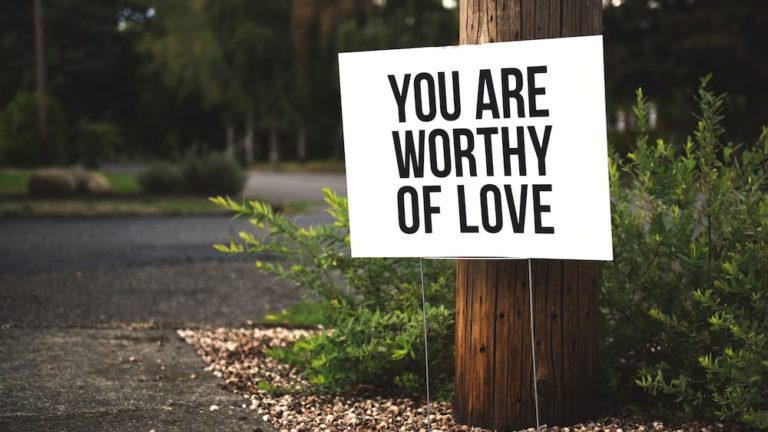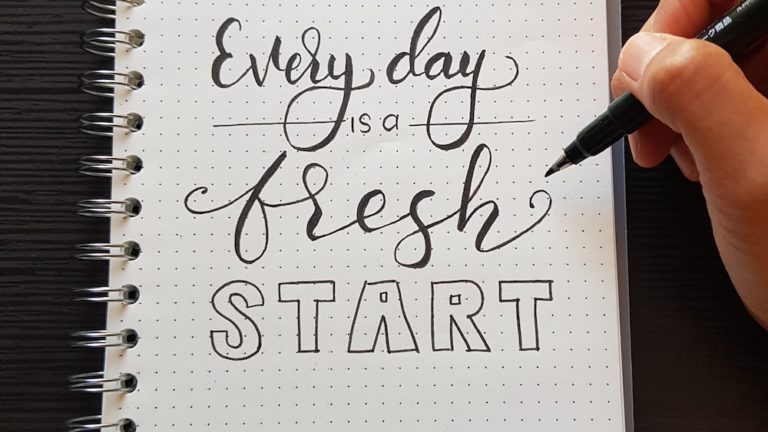Mindfulness And Acceptance: The Power Of Letting Go
Hello there! Are you seeking ways to improve your mental and emotional well-being? If so, you’ve come to the right place! In this article, we’ll explore the transformative power of mindfulness and acceptance and how they can help you let go of unhelpful thought patterns and emotions. So sit back, relax, and let’s begin our journey into the world of mindfulness and acceptance.
The truth is, we live in a fast-paced and increasingly complex world, where stress and anxiety seem to be the norm. But what if we told you there’s a way to navigate these challenges with grace and resilience? The key lies in embracing mindfulness and acceptance, which can help us better understand our thoughts and emotions, and ultimately lead to a more balanced and fulfilling life.
Understanding Mindfulness and Acceptance
Before we dive into the nitty-gritty, let’s take a moment to clarify what we mean by mindfulness and acceptance. These two concepts are often used interchangeably, but they are distinct and complementary aspects of mental and emotional well-being.
Defining Mindfulness
Mindfulness is the practice of paying attention to the present moment in a non-judgmental and accepting manner. It involves being aware of your thoughts, emotions, and bodily sensations, without getting caught up in them or reacting to them impulsively. By cultivating mindfulness, we can develop a greater sense of self-awareness and learn to respond to life’s challenges with more clarity and effectiveness.
The beauty of mindfulness is that it’s a skill that can be cultivated through practice. Whether it’s through formal meditation or simply paying attention to your breath during daily activities, the more you practice, the better you get at being mindful.
Developing mindfulness helps cultivate self-awareness and teaches us to respond to life’s challenges with more clarity and effectiveness.
Defining Acceptance
Acceptance, on the other hand, refers to the act of embracing our thoughts, emotions, and experiences without judgment or resistance. It’s about acknowledging the reality of our situation and allowing ourselves to feel whatever we’re feeling, without trying to change or suppress it. By practicing acceptance, we can learn to let go of unhelpful thought patterns and emotional reactions, and instead respond to life’s challenges with greater flexibility and resilience.

Acceptance doesn’t mean that we passively resign ourselves to our circumstances. Rather, it’s about recognizing what’s within our control and what’s not, and choosing to focus our energy on the things we can actually influence.
The Connection Between Mindfulness and Acceptance
Now that we’ve defined mindfulness and acceptance, let’s explore how these two concepts are interconnected and how they can work together to promote mental and emotional well-being.
Acceptance as a Core Component of Mindfulness
Acceptance is, in fact, a fundamental aspect of mindfulness practice. When we’re mindful, we’re not only paying attention to our present-moment experience, but we’re also doing so with an attitude of acceptance and non-judgment. By embracing our thoughts and emotions without resistance, we can develop a more balanced and compassionate relationship with ourselves and others.
As you can see, mindfulness and acceptance are like two sides of the same coin. While mindfulness helps us cultivate awareness of our moment-to-moment experience, acceptance enables us to embrace that experience with openness and compassion.
The Role of Non-Judgment in Mindfulness and Acceptance
Non-judgment is a key ingredient in both mindfulness and acceptance. Often, our natural tendency is to label our experiences as “good” or “bad,” which can lead to unnecessary suffering and stress. By practicing non-judgment, we can learn to observe our thoughts and emotions as they are, without getting caught up in the stories we create around them.
Why is non-judgment so important? For one, it helps us let go of the need to control or change our experience, which can be incredibly liberating. It also allows us to develop a greater sense of self-compassion and understanding, as we learn to accept ourselves and our experiences without harsh criticism or blame.
So, the next time you find yourself getting caught up in judgmental thoughts, try taking a step back, observing your experience with curiosity, and reminding yourself that it’s okay to feel whatever you’re feeling.
Benefits of Practicing Mindfulness and Acceptance
Now that we have a better understanding of mindfulness and acceptance, let’s delve into the myriad of benefits that come from incorporating these practices into our daily lives.
Improved Mental and Emotional Wellbeing
One of the most significant benefits of practicing mindfulness and acceptance is the positive impact it can have on our mental and emotional wellbeing. Numerous studies have shown that cultivating mindfulness can lead to:
- Reduced stress and anxiety
- Improved mood and emotional regulation
- Increased self-awareness and self-compassion
- Enhanced relationships and communication skills
By fostering acceptance, we can also learn to let go of unhelpful thought patterns and emotional reactions, leading to greater emotional resilience and well-being.
Enhanced Physical Health
But the benefits of mindfulness and acceptance don’t stop at mental and emotional well-being. These practices can also have a profound impact on our physical health. Research has shown that mindfulness and acceptance can:
- Lower blood pressure and heart rate
- Boost immune system function
- Improve sleep quality and reduce insomnia
- Alleviate chronic pain and inflammation
Furthermore, the stress-reducing effects of mindfulness and acceptance can also contribute to overall physical health, as chronic stress has been linked to a myriad of health issues, including heart disease and diabetes.
Increased Resilience and Stress Management
Practicing mindfulness and acceptance has a tremendous impact on our ability to bounce back from difficult situations. By learning to accept our emotions and thoughts without judgment, we become more resilient in the face of adversity. Think of it like a rubber band: the more we stretch ourselves to be present and non-judgmental, the stronger and more flexible we become.
Furthermore, mindfulness and acceptance play a crucial role in stress management. When we’re stressed, our minds tend to race with worries and negative thoughts. Through mindfulness techniques, we learn to observe these thoughts without getting caught up in them, and acceptance helps us to let go of the need for control. As a result, we experience lower stress levels and increased emotional stability.

Incorporating mindfulness and acceptance into your daily life can make a world of difference when it comes to your mental health and overall well-being. So, why not give it a try and see how these practices can transform your life?
Cultivating Mindfulness and Acceptance
Ready to embark on your mindfulness and acceptance journey? Let’s explore some practical steps and strategies to help you develop these essential skills and reap the benefits of a more balanced and resilient life.
Developing Self-Awareness
The first step in cultivating mindfulness and acceptance is to develop self-awareness. This means becoming more in tune with your thoughts, emotions, and bodily sensations. By paying attention to what’s happening within us, we gain a deeper understanding of our inner world and how it affects our overall well-being.
To begin developing self-awareness, try setting aside a few minutes each day to simply observe your thoughts and feelings without judgment. You may find it helpful to set a gentle timer, so you can fully focus on your inner experience without getting lost in your thoughts. Over time, this practice will help you recognize patterns and triggers that may be contributing to stress or negative emotions.
Practicing Non-Judgment and Compassion
As you become more self-aware, it’s essential to practice non-judgment and compassion towards yourself. This means letting go of any harsh criticism or negativity and replacing it with understanding and kindness. After all, we’re only human, and it’s okay to have flaws and make mistakes.
One way to practice non-judgment and compassion is through the use of affirmations. These positive statements can help to reframe negative thoughts and remind you of your worth. For example, instead of saying “I’m terrible at this,” try saying “I’m learning and growing.” With practice, you’ll find it easier to treat yourself with the kindness and compassion you deserve.
Practice non-judgment and compassion towards yourself by letting go of harsh criticism, reframing negative thoughts, and treating yourself with kindness and understanding.
Incorporating Mindful Meditation Techniques
Mindful meditation is a fantastic way to deepen your mindfulness and acceptance practice. There are numerous techniques to choose from, so you’re bound to find one that suits your needs and preferences.
- Body scan meditation: This practice involves systematically focusing your attention on different parts of your body, starting from your toes and working your way up to your head. As you do this, observe any sensations or tension without judgment, and release them with your breath.
- Loving-kindness meditation: This technique involves silently repeating phrases of love and compassion towards yourself and others. For example, “May I be happy, may I be healthy, may I be safe, may I be at ease.”
- Breath-focused meditation: This practice involves simply focusing on your breath, observing the sensations of inhaling and exhaling without trying to control them.
Experiment with different techniques to find one that resonates with you and helps you cultivate mindfulness and acceptance in your daily life.
Overcoming Common Misconceptions About Acceptance
Before we delve further into the world of mindfulness and acceptance, let’s address some common misconceptions that may be holding you back from fully embracing these practices.
Acceptance vs. Resignation
One common misconception about acceptance is that it means giving up or resigning ourselves to our circumstances. However, this couldn’t be further from the truth. Acceptance is about acknowledging our current reality without judgment and recognizing that we can’t control everything in our lives.
Embracing acceptance doesn’t mean we stop trying to improve or change our situation. Instead, it allows us to make peace with what we cannot change and focus our energy on what we can control. This approach ultimately leads to greater resilience, peace of mind, and personal growth.

Embracing Change and Letting Go of Control
Another common misconception is that practicing mindfulness and acceptance means being passive and avoiding change. In reality, these practices encourage us to embrace change and let go of our need for control.
When we learn to accept the impermanence of life and the fact that we can’t control everything, we become more adaptable and open to new experiences. This mindset allows us to navigate life’s challenges with grace and resilience, making us better equipped to handle whatever comes our way.
Practical Tips for Integrating Mindfulness and Acceptance into Daily Life
Now that we’ve explored the foundations of mindfulness and acceptance, let’s dive into some practical tips and techniques to help you seamlessly integrate these practices into your daily life.
Mindful Breathing Exercises
Mindful breathing exercises are a simple yet powerful way to bring more mindfulness and acceptance into your daily life. These exercises focus on your breath, helping you to stay present in the moment and let go of any judgment or resistance. One popular technique is the 4-7-8 breath, which involves inhaling for 4 counts, holding the breath for 7 counts, and exhaling for 8 counts. This practice not only cultivates mindfulness but also has a calming effect on the nervous system.
Another effective mindful breathing exercise is alternate nostril breathing, which involves closing one nostril while inhaling through the other, then switching nostrils as you exhale. This technique helps to balance the left and right hemispheres of the brain, promoting mental clarity and focus. By incorporating mindful breathing exercises into your daily routine, you can strengthen your ability to practice acceptance and stay present in the face of life’s challenges.
Incorporating mindful breathing exercises into your daily routine can promote mental clarity, focus, and strengthen your ability to practice acceptance.
Mindful Walking and Movement
Mindful walking and movement are excellent ways to integrate mindfulness and acceptance into your daily activities. By paying attention to the sensations in your body as you move, you can cultivate a greater sense of awareness and connection to the present moment. One approach to mindful walking is to focus on the feeling of your feet connecting with the ground, noting the rhythm and sensations of each step.
Additionally, you can practice mindful movement through activities like yoga, tai chi, or even dance. These practices encourage you to stay present and aware of your body’s sensations while moving gracefully and fluidly. By engaging in mindful walking and movement, you can develop a deeper understanding of your body’s needs and learn to accept and embrace your physical experiences without judgment.
Journaling and Reflective Practices
Journaling is a fantastic tool for promoting mindfulness and acceptance. By putting your thoughts and feelings down on paper, you can gain valuable insights into your mental and emotional patterns, helping you to cultivate greater self-awareness. One approach to mindful journaling is to set aside time each day to write about your experiences and emotions, noting any moments of acceptance or resistance that arise.
In addition to journaling, other reflective practices like meditative self-inquiry can be used to deepen your understanding of mindfulness and acceptance. This involves asking yourself open-ended questions such as, “What am I experiencing right now?” or “How am I relating to my thoughts and feelings?” By engaging in these reflective practices regularly, you can develop the skills necessary to approach life with greater mindfulness, acceptance, and compassion.
FAQs
1. How long does it take to see the benefits of practicing mindfulness and acceptance?
Seeing the benefits of practicing mindfulness and acceptance varies for each individual, but many people begin to notice positive changes in their mental and emotional wellbeing within a few weeks of consistent practice. As with any skill, the more you practice, the more profound and lasting the benefits will be.
2. Can mindfulness and acceptance help with anxiety and depression?
Mindfulness and acceptance have been shown to be effective in reducing the symptoms of anxiety and depression for many individuals. By learning to observe and accept your thoughts and emotions without judgment, you can develop a healthier relationship with your mental experiences, making it easier to manage difficult emotions and maintain emotional stability.

3. Are there any potential drawbacks or risks to practicing mindfulness and acceptance?
While the practice of mindfulness and acceptance is generally considered safe and beneficial for most people, some individuals may experience increased feelings of anxiety or emotional discomfort during the initial stages of practice. If you find that your practice is causing you distress, it may be helpful to seek guidance from a qualified therapist or mindfulness teacher to ensure that you are approaching your practice in a supportive and appropriate manner.
4. How can I maintain a consistent mindfulness and acceptance practice in a busy lifestyle?
Maintaining a consistent mindfulness and acceptance practice in a busy lifestyle can be achieved by incorporating mindful moments into your daily routine. This might include taking a few minutes each day to practice mindful breathing exercises, engaging in mindful walking during your commute, or setting aside time for journaling and reflection. By making mindfulness and acceptance a priority, you can create lasting habits that support your overall wellbeing.
Conclusion
The practice of mindfulness and acceptance offers a powerful path towards greater emotional resilience, mental clarity, and overall wellbeing. By cultivating self-awareness and learning to approach life with a non-judgmental and compassionate attitude, we can experience the transformative power of letting go.
Remember that mindfulness and acceptance are skills that develop over time with practice and patience. By incorporating mindful breathing exercises, mindful walking and movement, and journaling and reflective practices into your daily life, you can build a strong foundation for lasting change. Keep exploring and experimenting with different techniques, and most importantly, be gentle with yourself as you navigate this journey of self-growth and discovery. With dedication and persistence, you’ll find that mindfulness and acceptance can truly transform your life.
I wish you the best! Fabian.
Share with your Friends:






